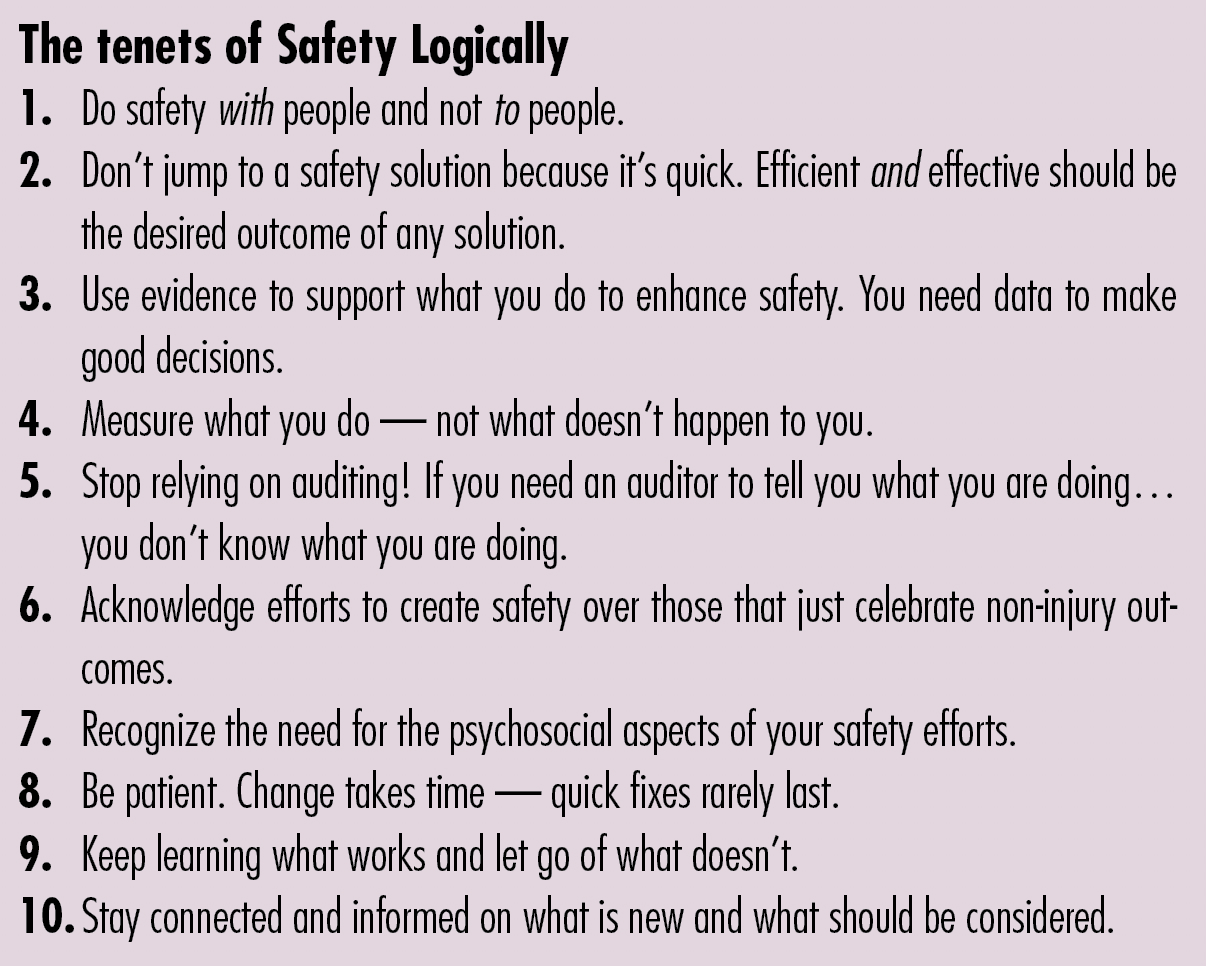
Efficient doesn’t always mean effective
April 13, 2020
By
Alan Quilley
Resisting the temptation to jump to easy, yet ineffective, solutions is a common challenge for employers
 In exploring a more logical approach to implementing safety management systems, I’ve discovered that beyond full engagement of employees, second on the Safety Logically tenets list is resisting the temptation to jump to easy yet ineffective solutions to the challenges we face.
In exploring a more logical approach to implementing safety management systems, I’ve discovered that beyond full engagement of employees, second on the Safety Logically tenets list is resisting the temptation to jump to easy yet ineffective solutions to the challenges we face.
Probably the most prevalent example of failure is the ever-present safety orientation video. I’ve seen this orientation tool so drastically misused that I’m almost of the mind that we should make them illegal. Typically, these well-intentioned videos have the goal of orienting new employees and contractors to a company’s safety requirements.
The first tenet that these videos violate is that they are (typically) totally passive by design. It’s one-way communication at its worst — lots of telling with almost no chance for questions or clarification by the viewer.
There is an expectation that brand-new employees — who may not even know where the washroom is — mentally absorb a long list of critical information. Far too often this critical information is blasted at them at breakneck speed by a fast-talking announcer rattling off everything from emergency procedures to confined-space entry permits.
It may look like an efficient way of touching bases with employees, but it’s totally ineffective. Retention of this type of delivered information can be expected to be zero.
Towards microlearning
What will be our present in our collective future is a much more evidenced-based microlearning technology where employees are motivated to learn at their own pace and are not passively, force-fed information. When designed well, microlearning is highly effective and certainly efficient.
But these orientation videos aren’t the only violation of the effective-and-efficient requirement to achieve safety excellence. Having virtually untrained managers and front-line supervisors manage safety in their areas of responsibility is bordering on insane. Like the safety orientation video, management training in OH&S responsibilities and skills often suffers the efficient but not effective test.
We often jump to solutions like executive-summary training, when in fact these leaders need intensive education and training on what it actually takes to implement world-class safety initiatives. Leaders need to be trained in the behaviours they need to implement to provide the demonstrated commitment actions that organizations demand of them.
“What you do speaks so loudly, I can’t hear what you say” has never rung truer than in our safety management efforts.
Use evidence appropriately
The third tenet on the Safety Logically list is interconnected to all of the others.
We must use whatever evidence that we can gather about our safety-creating efforts and created results to logically know what to continue doing and what to stop. It becomes all important to stop doing activities if they are not getting us the results we want.
Following the orientation example — how do you know that your orientation for new employees and contractors is working?
First, you could simply ask them to describe what they know about your requirements sometime after they have watched the video. Engage them in describing what they should do in a safety sensitive situation. If they actually know, they will be able to describe it. Asking them to pass a series of questions seconds after they have watched the video proves very little.
Similarly, one could ask the management team of their organization a series of questions about the process they should use in a safety situation to encourage future safe behaviours from their employees — and if they have used those steps in the last week. If you collect and analyze the information you gather in these two examples alone, you are miles ahead of those who don’t.
Safety Logically requires us not only to do new things. It also requires us to stop doing those things that bring us little or no return on our investments in effort.
Alan Quilley is the president of Safety Results in Sherwood Park, Alta.